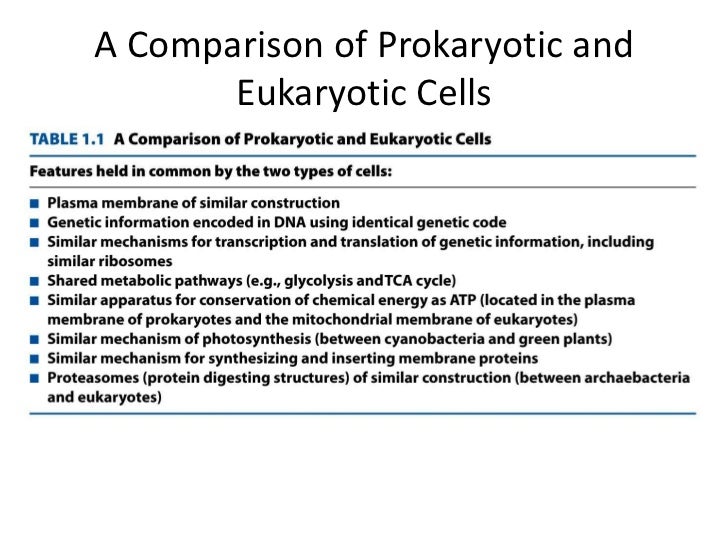Main Difference – Prokaryotic vs Eukaryotic DNA Replication Prokaryotic and eukaryotic DNA replications occur before the beginning of the. Is a biological process by which the two genetically identical replicas of DNA are synthesized from a single, original molecule. DNA replication ensures the receipt of the exact copy of the parent’s genetic material by each daughter cell. DNA replication is carried out by a class of enzymes called. Both prokaryotic and eukaryotic DNA replications are semi-conservative DNA replications in which one old and one new strand can be found in the daughter cell. Though the process of DNA replication is nearly similar in both and some differences may occur due to the size and the complexity of the genetic material.
Prokaryotes and Eukaryotes questions.pdf - Prokaryotic. There between a prokaryotic and eukaryotic cell? Describing the difference between prokaryotic cells. TABLE 3.1 DIFFERENCE BETWEEN PROKARYOTIC AND EUKARYOTIC CELLS. Most of the prokaryotic cell especially of. Plant Cell TABLE 3.2 DIFFERENCE BETWEEN ANIMAL. PROKARYOTIC AND EUKARYOTIC CELLS. What effect do you expect the structural differences between prokaryotes and eukaryotes to have on their functions?
The main difference between prokaryotic and eukaryotic DNA replication is that prokaryotic DNA replication occurs through a single origin of replication whereas eukaryotic DNA replication occurs through multiple replication origins. Key Areas Covered 1. – Definition, Features, Mechanism 2. Adobe Photoshop Cs6 Keygen Download Kickass there. – Definition, Features, Mechanism 3. – Outline of Common Features 4. – Comparison of Key Differences Key Terms: DNA polymerase, Eukaryotic DNA Replication, Lagging Strand, Leading Strand, Origin of Replication, RNA Primer, Prokaryotic DNA Replication, Replication Bubble, Replication Fork What is Prokaryotic DNA Replication Prokaryotic DNA replication is the process by which prokaryotes such as bacteria and duplicate their genome into a second copy, which can be transformed into a daughter cell.

Prokaryotes consist of a double-stranded circular DNA molecule in their cytoplasm. Comprises a single origin of replication. DNA helicase unwinds the DNA at the origin of replication by breaking the hydrogen bonds between the nitrogenous bases.
The resultant Y-shaped structure is called the replication fork. Since prokaryotic DNA contains a single origin of replication, only two replication forks are formed during the replication process. These two replication forks process bi-directionally.

Career Switcher Program Va Gmu Email. The single-strand DNA-binding proteins (SSB) stabilizes the two unwound strands, which serve as the template strands for the replication. The enzyme, RNA primase synthesizes a five to ten base pairs long RNA primer, which is complementary to the template strand. Figure 1: DNA replication in Prokaryotes Three types of DNA polymerases are involved in the prokaryotic DNA replication; DNA, II, and.
Both initiation and elongation of the prokaryotic DNA replication are carried out by DNA polymerase III. The DNA polymerase III adds in 5’ to 3’ direction. Due to the antiparallel nature of the DNA double-helix, one strand runs from 5’ to 3’ direction (leading strand). The other strand runs from 3’ to 5’ direction (lagging strand).
Since, the lagging strand requires RNA primers continuously in order to synthesize DNA in the 5’ to 3’ direction, new fragments of DNA called Okazaki fragments are continuously formed. The gap filling and DNA repair are carried out by DNA polymerase I and II. The RNA primer is removed by the DNA polymerase I. Seeda Concrete Green Zip Code on this page. The process of DNA replication in prokaryotes is shown in figure 1. What is Eukaryotic DNA Replication Eukaryotic DNA replication is the process by which the eukaryotic genome duplicates prior to cell division. Though the basic mechanism of the eukaryotic DNA replication is similar to prokaryotic DNA replication, there are some differences due to the size and the structure of eukaryotic DNA. Is double-stranded linear molecules.